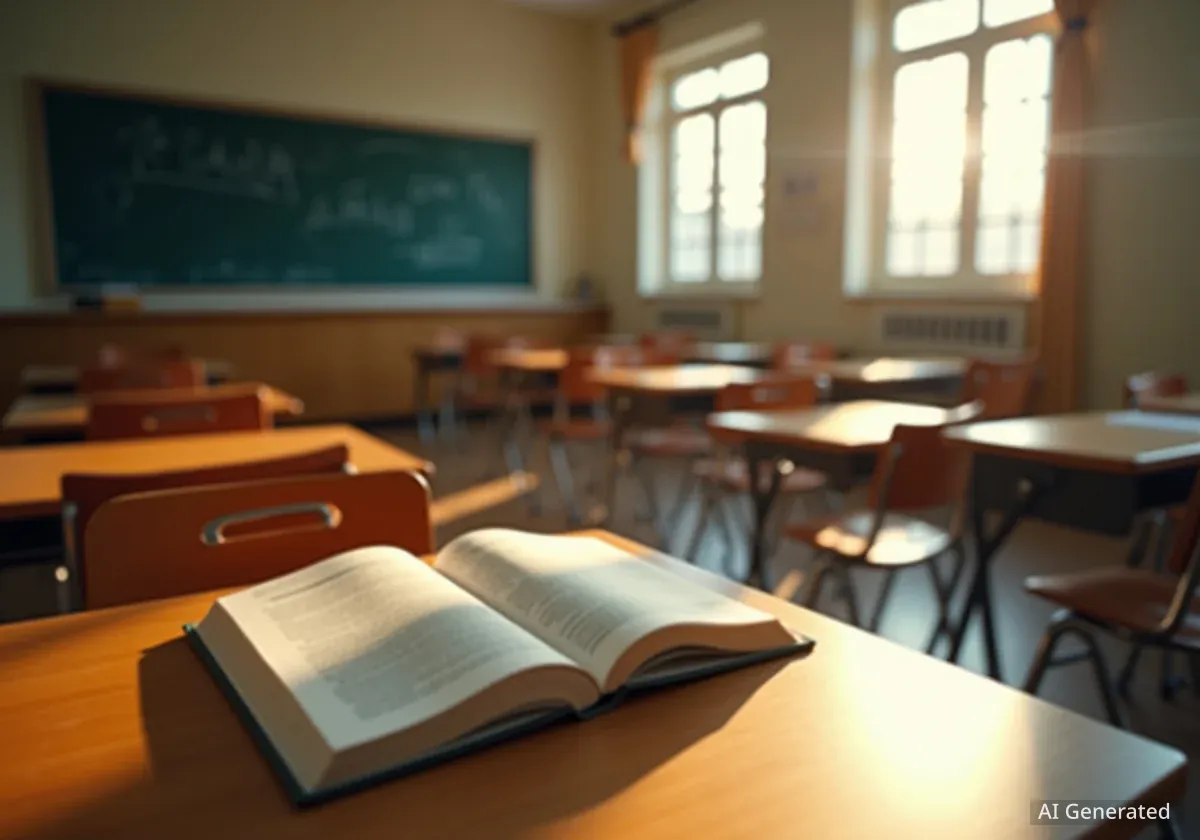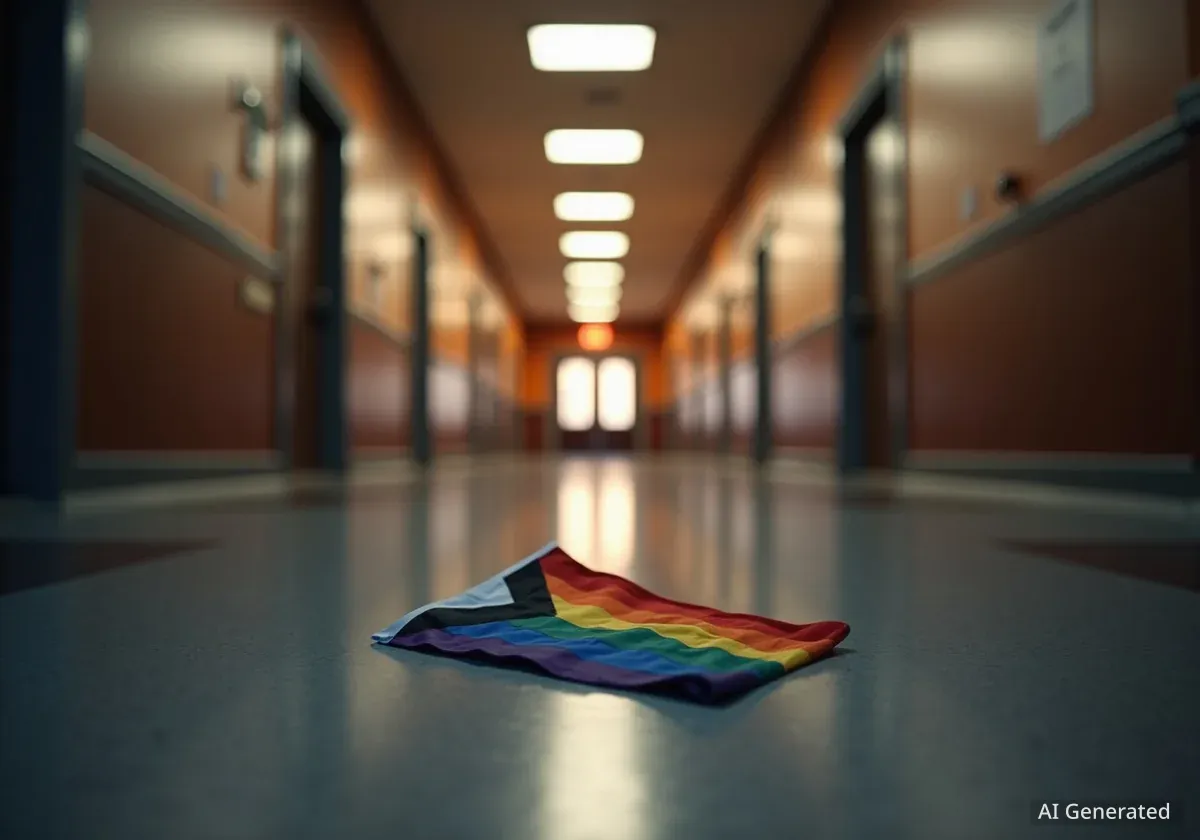Two Rivers High School has observed positive results following the implementation of its new 'Bell to Bell, no Cell' policy. The initiative, which restricts student cellphone use throughout the school day, has led to increased classroom engagement and improved student productivity since its launch this academic year.
Key Takeaways
- Two Rivers High School implemented a 'Bell to Bell, no Cell' policy this academic year.
- Initial incidents of non-compliance, mostly involving smartwatches, have decreased significantly.
- Teachers report higher student engagement and participation in classes.
- Student work completion rates have improved.
- Many students are choosing to move from study halls to additional classes.
- Community members have supported the policy change.
Policy Implementation and Community Support
The 'Bell to Bell, no Cell' policy at Two Rivers High School began at the start of the current academic year. This initiative prohibits students from using cellphones and other personal electronic devices from the first bell to the last bell.
Preparation for this change started over the summer. School administrators collaborated with students to create a video reminder about the new rules. This video was widely shared on social media platforms to inform the student body in advance.
Additionally, multiple reminders were sent to families throughout the summer break. This proactive communication aimed to ensure that parents and guardians were fully aware of the upcoming policy and could discuss it with their children.
Background on School Cellphone Policies
Many school districts across the United States are re-evaluating cellphone policies. Concerns often include distraction in classrooms, cyberbullying, and negative impacts on student mental health. Policies range from complete bans to allowing phones during non-instructional time.
The goal is typically to create a more focused learning environment and encourage in-person social interaction among students.
Community members have shown strong support for the policy. This backing from the wider town has been a key factor in the smooth rollout of the new rules. This collective support indicates a shared belief in the policy's potential benefits for student learning and well-being.
Incidents and Compliance Trends
During the first week of school, the high school recorded fewer than 15 incidents of students not following the new cellphone rules. This initial number was relatively low, considering the significant change in policy.
Since that first week, the number of incidents has continued to decrease. Most reported instances of non-compliance have involved smartwatches rather than traditional cellphones. This suggests that students are adapting to the primary restriction on phones more effectively.
Key Statistic
- Less than 15 incidents occurred in the first week.
- The number of incidents has steadily decreased since then.
- Most incidents involved smartwatches, not cellphones.
The decreasing trend in incidents indicates that students are quickly adjusting to the new expectations. The school's clear communication and consistent enforcement have likely contributed to this positive outcome.
Impact on Classroom Environment and Student Engagement
Teachers at Two Rivers High School have reported a noticeable difference in the classroom environment. They observe that students are now much more engaged during lessons.
Student participation rates in class discussions and activities have also increased significantly. With fewer distractions from personal devices, students appear to be more focused on their academic tasks.
"Overall, the students have been much more engaged and are participating in classes at a higher rate," one teacher noted. "Work completion rate has gone up as well."
This direct feedback from educators highlights the immediate positive effects of the policy. The absence of phones allows for a more immersive learning experience, benefiting both students and teachers.
Student Productivity and Academic Choices
The policy has also influenced student productivity outside of direct classroom instruction. The rate of work completion among students has improved since the policy took effect. This suggests that students are using their time more effectively without the constant temptation of their devices.
A notable trend is the increase in students requesting to move out of study halls. Instead, many students are opting to take more classes. This indicates a shift in how students perceive their academic time and opportunities.
Student Impact
- Increased work completion rates.
- Many students are requesting to take more classes.
- Fewer students are choosing to remain in study halls.
This willingness to engage in more coursework points to a renewed focus on academic pursuits. It also suggests that students feel more capable of managing their workload without digital interruptions.
Student Perspectives on the Policy
While some students still express a desire to have their phones, many have recognized the benefits of the new policy. They acknowledge the initial difficulty but appreciate the positive changes in their productivity.
One student commented, "It was hard at first, but after a couple of weeks it is easier." This sentiment reflects a common adjustment period to new rules, followed by an acceptance of the new routine.
Many students have voiced surprise at how much work they are able to complete. This self-awareness among students about their improved focus is a strong indicator of the policy's effectiveness.
The early success of the 'Bell to Bell, no Cell' policy at Two Rivers High School suggests it will continue. The positive impact on engagement, participation, and productivity aligns with the school's goals for student success.





